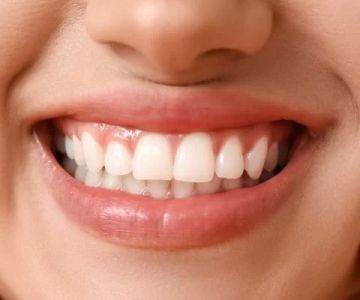- 1 - Signs-of-oral-bacterial-infection-detection
- 2 - Causes-and-risk-factors-for-oral-infection
- 3 - Diagnosis-and-professional-assessment
- 4 - Treatment-options-for-oral-bacterial-infection
- 5 - Preventive-measures-and-oral-health-maintenance
- 6 - Real-life-examples-of-oral-infections
1. Identifying the Early Signs of Oral Bacterial Infection
Oral bacterial infections can silently develop before causing significant discomfort, making early recognition critical. Common signs often start subtly but can escalate quickly. These signs include persistent bad breath, redness and swelling of the gums, tender or bleeding gums, and unusual sensitivity or pain when chewing.
One typical symptom is the appearance of painful sores or ulcers inside the mouth that don’t heal promptly. Additionally, a noticeable white or yellowish film on the tongue or inner cheeks may indicate bacterial overgrowth. If these symptoms persist beyond a week, it’s a strong indicator that an oral bacterial infection could be present.
By understanding these initial signs, individuals can seek timely treatment, avoiding complications such as gum disease or even tooth loss. Maintaining awareness of oral health changes is essential, especially if you already have risk factors.
1.1 Common symptoms and their implications
Beyond discomfort, these symptoms suggest inflammation and bacterial colonization that can damage oral tissues. For example, bleeding gums may signal gingivitis, the early stage of gum disease caused by bacterial plaque. Left untreated, this can progress to periodontitis, a more severe condition affecting the bone supporting the teeth.
2. Causes and Risk Factors Behind Oral Bacterial Infection
Understanding what causes oral bacterial infections is key to preventing them. The mouth hosts hundreds of bacteria species, but imbalance or introduction of harmful bacteria leads to infections. Poor oral hygiene is the leading cause, allowing plaque and tartar buildup, which harbor bacteria.
Other significant risk factors include smoking, uncontrolled diabetes, dry mouth conditions, and a weakened immune system. Additionally, poor nutrition and frequent consumption of sugary foods and drinks fuel bacterial growth.
2.1 The role of oral hygiene and lifestyle
Neglecting regular brushing and flossing creates an environment where harmful bacteria thrive. Smoking compounds this by impairing gum tissue healing and reducing blood flow. Diabetic patients must be especially cautious, as high blood sugar levels can promote bacterial proliferation and reduce infection resistance.
3. Diagnosing Oral Bacterial Infections with Professional Care
While early symptoms can guide suspicion of an infection, a professional dental assessment is crucial. Dentists use clinical examinations, including checking gum pockets, oral tissue condition, and sometimes X-rays, to evaluate the extent of infection. In complex cases, bacterial cultures or DNA testing may be recommended to identify specific bacteria strains.
Prompt and accurate diagnosis not only guides appropriate treatment but also helps prevent systemic complications, such as bacterial spread leading to heart or lung issues.
4. Effective Treatment Options for Oral Bacterial Infection
Treatment depends on the infection severity and the bacterial species involved. Mild infections typically respond well to improved oral hygiene and professional cleaning to remove plaque and tartar. Antibacterial mouth rinses or gels may be prescribed to reduce bacterial load locally.
More severe infections might require antibiotics to control bacterial spread. In cases where gum disease has progressed, procedures like scaling and root planing or even surgical intervention might be necessary to restore oral health.
4.1 Customized treatment for lasting results
Each patient’s condition is unique. A holistic approach that combines clinical care, patient education, and lifestyle modification leads to better outcomes. For example, a patient with recurrent infections may benefit from dietary counseling and smoking cessation support alongside dental treatment.
If you want to find the best oral care products or professional services tailored to your needs, Dentistry Toothtruth offers a comprehensive selection to support your oral health journey.
5. Preventing Oral Bacterial Infections through Daily Habits
Prevention remains the most effective strategy. Daily habits such as brushing twice a day with fluoride toothpaste, flossing to remove plaque between teeth, and using antibacterial mouthwash reduce bacterial buildup significantly. Regular dental check-ups are essential to catch early signs and receive professional cleanings.
Maintaining a balanced diet low in refined sugars and staying hydrated also supports oral immunity. Avoiding tobacco and managing systemic conditions like diabetes further lowers infection risks.
5.1 Building a sustainable oral care routine
Incorporate oral hygiene into your daily routine as a non-negotiable habit. Set reminders if necessary and consider using electric toothbrushes or interdental brushes for more thorough cleaning. Dentistry Toothtruth can help you choose tools and products suited to your specific oral health needs.
6. Real-Life Stories Highlighting the Impact of Oral Bacterial Infection
Take the example of Sarah, a 35-year-old woman who ignored early gum bleeding for months. Eventually, she developed painful gum inflammation and tooth sensitivity. After visiting her dentist, she was diagnosed with moderate periodontitis and treated with deep cleaning and antibiotics. Post-treatment, Sarah adopted a stricter oral hygiene routine and credits this change with saving her smile.
Stories like Sarah’s emphasize how early intervention can change outcomes dramatically. Many patients who visit Dentistry Toothtruth share similar journeys, demonstrating that informed action and professional care can restore oral health effectively.







 Cosmos Family Dental, PC4.0 (28 review)
Cosmos Family Dental, PC4.0 (28 review) White Smiles Family Dental4.0 (74 review)
White Smiles Family Dental4.0 (74 review) David A. Rice, DDS4.0 (186 review)
David A. Rice, DDS4.0 (186 review) Kevin B. Sands, DDS5.0 (168 review)
Kevin B. Sands, DDS5.0 (168 review) Dr. Ruaa Adham0.0 (0 review)
Dr. Ruaa Adham0.0 (0 review) Rich Orthodontics -Willow Grove3.0 (39 review)
Rich Orthodontics -Willow Grove3.0 (39 review) The Importance of Oral Health Education During Pregnancy for a Healthy Pregnancy
The Importance of Oral Health Education During Pregnancy for a Healthy Pregnancy Best Tips for Brushing Your Teeth Properly for Healthy Gums: Essential Techniques for Oral Health
Best Tips for Brushing Your Teeth Properly for Healthy Gums: Essential Techniques for Oral Health Why Skipping Dental Checkups Can Lead to Bigger Oral Health Problems
Why Skipping Dental Checkups Can Lead to Bigger Oral Health Problems Advantages of Porcelain Dental Restorations
Advantages of Porcelain Dental Restorations How Can Diabetes Cause Tooth and Gum Problems? Preventing and Managing Oral Health Issues
How Can Diabetes Cause Tooth and Gum Problems? Preventing and Managing Oral Health Issues Healthy Habits for Promoting Good Oral Health and Hygiene: Tips for a Healthy Smile
Healthy Habits for Promoting Good Oral Health and Hygiene: Tips for a Healthy Smile